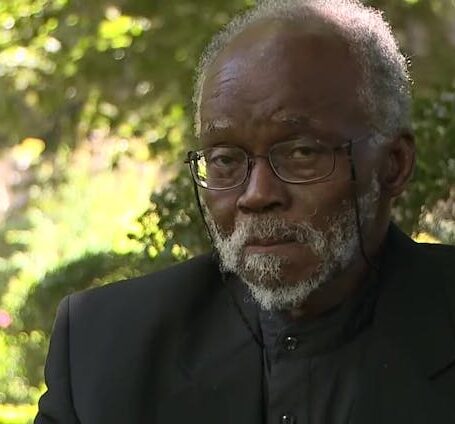Impact Requires Breadth and Ideas, Not Tick Boxes
In UK universities, there is a strong demand for researchers to collaborate across disciplinary boundaries. In response to current grand challenges, such as antibiotic resistance, food poverty and climate change, there has been a large and rapid rise in institutional and multi-agency collaborations. In line with this mission-based approach, Chris Skidmore (the UK Minister of State for Universities, Science, Research and Innovation) recently advocated the need for increased transparency in research funding and the introduction of a five-year financial framework, underscoring the link between funding source and research outcomes.
In addition, a range of measures now support evaluation of cross-disciplinary research within the Research Excellence Framework (REF), including an inter-disciplinary research advisory panel. Impact has also been increased to 25 percent of the overall score in the REF2021 exercise. Against this backdrop, new cross-disciplinary working initiatives are typically announced as novel, heralding a new methodology and often ‘breaking out of silos’. Back in the 90’s this kind of approach was famously championed as a whole new way of working: ‘Mode 2,’ particularly in scientific and technological fields.
Looking into the meta-research archives, we are reminded that research has always been conducted both within and across disciplines and fields; findings from my own research into research inter and trans-disciplinary research practices concur with this idea. The human imagination has never been restricted by our ways of organising knowledge production, be they academic disciplines or their antecedents. Taking a trans-disciplinary perspective in my own research, I would argue that the academic disciplines are not static either. New fields develop and ways of working evolve to facilitate the needs of our times, for example, the incorporation of different knowledge types into research, such as service user views and expert opinions.

Setting aside the particular characteristics, traditions and uses of collaborative research, universities are keen to replicate the outcomes from multi-factorial, applied research across their institutions by advocating collaborative methods as a starting point across all disciplines. The aim of this reverse engineering of a basic research practice, namely that the question comes first, is to increase the yield of impactful knowledge. This is fostered in British universities by the provision of training on various ways of working collaboratively. These include partnership with non-academic bodies, public engagement activities, and cross-disciplinary research.
However, in some fields and disciplines, the rationale for multi-disciplinary or co-produced research is not authentic, collaborative partners not being necessary to answer many research questions. There are also limits to the powers of research knowledge despite its rich diversity; even co-produced work is limited in its effects. We still need judgement to make decisions.
In 2018 I completed an institutional case study exploring how research methods and knowledge types had changed under pressures on academics to produce instrumental knowledge, that is, research knowledge that has obvious application in policymaking, practice or a commercial value. I conducted group interviews with researchers at different career stages and from four disciplinary areas. I used Tony Becher and Paul Trowler’s heuristic to inform the design of the study, the groups were located as far as operationally possible in the categories of soft pure, soft applied, hard applied and hard pure disciplines. I also interviewed researchers in a multi-disciplinary group, with members drawn from the four initial departments.
No positive views were elicited on ‘impact training’ in one example, participants discussed an advertisement for a public engagement workshop, a masterclass designed to encourage researchers to do more dissemination work. My respondents across four disciplinary areas (natural sciences, humanities, science and social science based professions) thought this type of training was ineffective, a waste of time if not tailored to their own research context, and ultimately an irritation. One participant said that the title of the training session:
‘…sounds like something that’s been set up in order to tick some boxes on the next REF exercise…raises hackles I’m afraid…’
My study highlighted two prerequisites for successful collaborative research. Firstly, there needs to be a warrant, a rationale emanating from the research question or process in order to necessitate collaboration, and secondly, liking the people you collaborate with goes a long way. Not ground breaking news, but interesting that similar ideas were manifest across all the groups in my study. In applied fields, researchers worked routinely in multi-disciplinary teams because the research questions demanded it. In other areas where any collaboration was unusual, attempts at cross-disciplinary work were sometimes successful and sometimes not.
Successful outcomes depended on different knowledge types complementing each other effectively, such as pairing theoretical with empirical knowledge, or qualitative with quantitative research. This was the end result, but initially, researchers’ motivation lay in academic puzzles, ideas, curiosity and wanting to solve a problem, which sat alongside more extrinsic motivations.
Universities are still unique in having a mandate to generate and disseminate knowledge for society’s benefit. As someone who works in higher education and researches it, it seems crucial to appreciate and cherish different knowledge forms, to rejoice in what our disciplines produce. We can do this and champion cross-disciplinary research.
The balance of research funding across disciplines is a current focus of debate. In this context, it is important to re-appreciate the worth of single disciplinary research alongside cross-disciplinary collaborations and their respective limitations and strengths.
Findings from my research also suggest that training programmes to incentivise cross-disciplinary collaboration and impactful research are best avoided. This is simply because they do not stimulate the behaviour required to attain the intended outcomes. My participants highlighted the importance of liking the people you work with and collaboration emanating from a shared interest, not a shared interest in collaboration.
Perhaps sparking a colleague’s curiosity through the increased promotion of work within our own institutions would go a long way to generate successful partnerships. As one of my participants said:
‘…universities always have a problem with getting people to work together and I think that’s because it assumes they need to drop in money and resources… but actually you have to do it by meeting someone, having a coffee with them, getting along with them… I think trying to force collaborations never works…’
Ultimately, it’s all about the ideas.





























































































